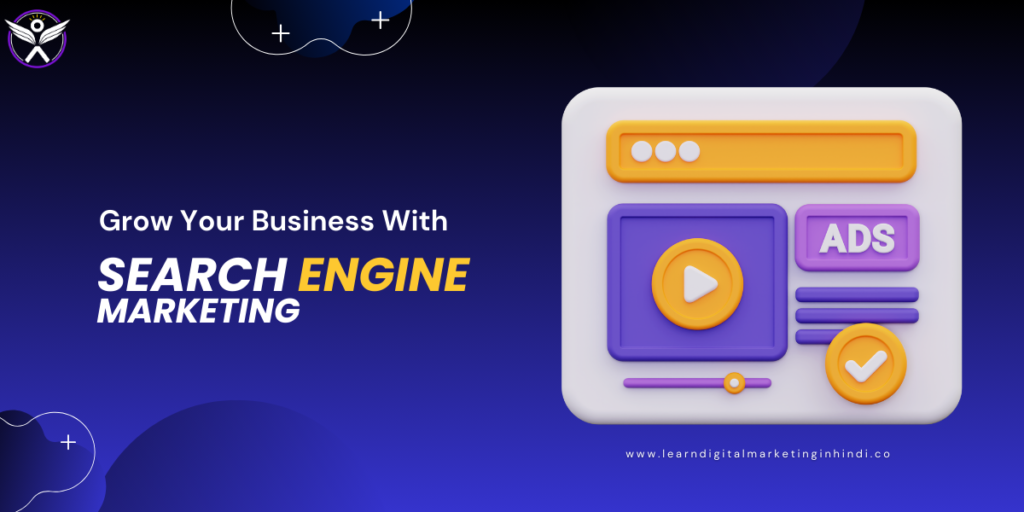Search Engine Marketing

Search Engine Marketing (SEM) is a form of digital marketing that involves promoting websites by increasing their visibility in search engine results pages (SERPs) through paid advertising. It complements Search Engine Optimization (SEO) but primarily focuses on paid search efforts.
Why is SEM Important?
- Instant Visibility: Paid ads appear at the top of search results immediately.
- Targeted Traffic: Attracts users actively searching for specific products or services.
- Measurable ROI: Allows tracking of conversions, clicks, and costs in real time.
- Control Over Budget: Set daily or campaign-specific spending limits.
- Flexible Targeting: Customize ads based on location, language, device, and demographics.
Key Components of SEM
1. Paid Search Ads
- Search Ads: Text ads that appear on SERPs for targeted keywords.
- Shopping Ads: Product-focused ads with images and pricing.
- Display Ads: Visual ads appearing on websites within the Google Display Network.
- Remarketing Ads: Ads targeting users who have previously visited your site.
2. Platforms for SEM
- Google Ads (formerly AdWords): The most popular SEM platform.
- Microsoft Ads (formerly Bing Ads): Targets Bing and Yahoo search engines.
- Other Search Engines: Platforms like Baidu (China) or Yandex (Russia).
3. Keyword Research
- Identify relevant keywords using tools like:
- Google Keyword Planner
- SEMrush
- Ahrefs
- Moz Keyword Explorer
- Focus on:
- High-Intent Keywords: Keywords signaling a purchase intent (e.g., “buy shoes online”).
- Long-Tail Keywords: More specific phrases with less competition.
4. Ad Auction
- Search engines use an auction system to display ads based on:
- Bid Amount: How much you’re willing to pay per click (Cost-Per-Click or CPC).
- Quality Score: Relevance and quality of your ad, keywords, and landing page.
- Ad Rank: Determines your ad’s position in SERPs, calculated as Bid × Quality Score.
5. Campaign Structure
- Ad Groups: Organize ads around specific themes or keywords.
- Ad Copy:
- Write compelling headlines and descriptions.
- Include keywords and a clear Call-to-Action (CTA).
- Landing Pages: Optimize for conversions with fast loading speed, clear messaging, and strong CTAs.
Key Metrics in SEM
- CTR (Click-Through Rate): Percentage of users who clicked your ad.
- CPC (Cost Per Click): Average cost for each ad click.
- Conversion Rate: Percentage of clicks leading to a desired action (e.g., purchase, signup).
- Quality Score: Rating based on ad relevance, landing page experience, and CTR.
- Impressions: Number of times your ad is shown.
- ROI (Return on Investment): Profit generated from the campaign compared to its cost.
Benefits of SEM
- Precise Targeting: Target users based on location, device, demographics, and search behavior.
- Scalability: Increase or decrease ad spend based on performance.
- Enhanced Branding: Even non-clicked ads improve brand awareness.
- Customizable Budgets: Control costs to suit business size and goals.
- Competitive Edge: Outrank competitors with optimized ads.
SEM vs. SEO
| Aspect | SEM | SEO |
|---|---|---|
| Focus | Paid search results | Organic search results |
| Timeline | Immediate results | Long-term results |
| Cost | Pay-per-click (PPC) | No direct cost, but requires effort and time |
| Scalability | Easily scalable with budget | Gradual scalability |
| Targeting | Highly customizable | Limited to search algorithms |
Best Practices for SEM
- Start Small: Test campaigns with a limited budget.
- Use Negative Keywords: Exclude irrelevant searches to avoid wasting ad spend.
- A/B Testing: Experiment with different ad copies, keywords, and targeting.
- Optimize Landing Pages: Ensure consistency between ads and landing pages.
- Monitor Performance: Regularly analyze metrics and tweak campaigns for better results.
Would you like help setting up or optimizing an SEM campaign for your business? Let me know!